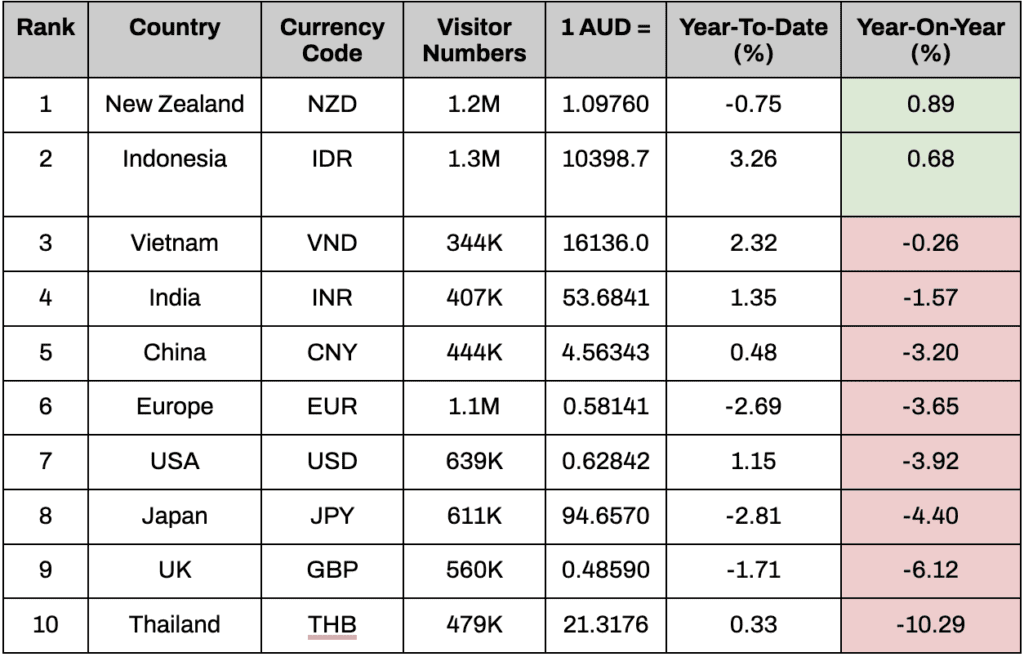Currency fluctuations impact travel budgets and affordability for Australians with some overseas destinations packing more (or less) punch for the Aussie dollar. Find out which countries currently offer the best value for international travel with the Australian dollar.
Australian non-bank lender MONEYME crunched the year-on-year currency data shifts in 10 popular hotspots for Aussie holidaymakers to uncover the best and worst destinations to visit right now based on the Aussie dollar.
Best destinations for the AUD

New Zealand and Indonesia emerged as the most budget-friendly countries for Aussies with the AUD performing well against the NZD and Indonesian rupiah (IDR).
While the value of the Australian dollar has fallen against India’s rupee (INR) and the Vietnamese dong (VND) year-on-year, the AUD has recovered against both of these currencies since the start of the year, offering slightly better value for travellers compared to previous months.
Worst destinations for the AUD

With the Aussie dollar declining YOY against the Chinese yuan (CNY), travel to China has become most costly for Australians with accommodation, dining and experiences in big cities likely to be more expensive.
The Australian dollar has also weakened against the Euro (EUR), meaning higher costs in France, Spain and Italy for the Euro summer, while Aussies travelling to the UK and the USA will find their budget won’t stretch as far as it did 12 months ago.

Ranked in eighth and 10th place on the list, Japan and Thailand are also no longer bargain destinations for Aussie travellers.
The conversion against the Japanese yen (JPY) represents the greatest decline for the Aussie dollar and Thailand has also become more expensive for Australian travellers.
More impacts on the horizon?

While the cash rate reduction may leave borrowers with extra cash to splash, MONEYME Group Treasurer Nigel Bradshaw said fluctuations in the Australian dollar can impact the cost of international travel.
“Many people don’t factor in currency fluctuations when budgeting for travel, but changes in exchange rates from when you book to your travel dates can significantly impact costs,” he said.
“Travellers may not realise domestic cash rate reductions can impact the Australian dollar’s value.
“When interest rates drop, Australian assets become less attractive to investors, which could weaken the Australian dollar. With potential further rate reductions on the horizon, this could mean higher costs for Australians travelling abroad.”





